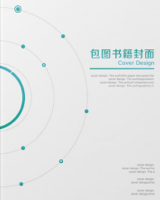The use of GRADE approach in Cochrane reviews of TCM was insufficient: a cross-sectional survey
Wang, Qi
Xiao, Ya
Guo, Taotao
Show more
Zhu, Hongfei
Li, Jieyun
Lai, Honghao
Zhang, Ying
Yang, Fengwen
Liu, Yu
Yang, Kehu
Chen, Yaolong
Tian, Jinhui
Ding, Guowu
Ge, Long
Close more
Ge, L (通讯作者),Lanzhou Univ, Sch Publ Hlth, Evidence Based Social Sci Res Ctr, Lanzhou, Peoples R China.;Ding, GW; Ge, L (通讯作者),Lanzhou Univ, Sch Publ Hlth, Dept Social Sci & Hlth Management, Lanzhou, Peoples R China.;Tian, JH (通讯作者),Lanzhou Univ, Sch Basic Med Sci, Evidence Based Med Ctr, Lanzhou, Peoples R China.;Tian, JH; Ge, L (通讯作者),Key Lab Evidence Based Med & Knowledge Translat G, Lanzhou, Peoples R China.
Objective: To conduct a cross-sectional survey on the application status of the Grades of Recommendations Assessment Development and Evaluation (GRADE) in Cochrane systematic reviews (CSRs) of traditional Chinese medicine (TCM). Study Design and Setting: : We searched CSRs of TCM from the inception to December 2020 in the Cochrane Library database. General characteristics and details of GRADE were extracted. Results: Among 226 CSRs of TCM, 86 (38.05%) involving 711 outcomes used GRADE to rate the certainty of evidence. Topics mainly focused on genitourinary diseases (17.44%), diseases of the musculoskeletal system or connective tissue (11.63%), and diseases of the nervous system (10.47%). Only 15.89% of the outcomes reported high or moderate certainty of evidence. Acupuncture was the most common intervention. There were no significant differences in evidence certainty between acupuncture and non-acupuncture, between TCM alone and integrated Chinese and western medicine, or between Chinese patent medicines and non-Chinese patent medicines ( P > 0.05). Among 1 273 instances of downgrading, 44.62% were due to the risk of bias and 40.14% due to imprecision. Conclusion: Overall, GRADE approach is not widely used in CSRs of TCM. The certainty of evidence is generally low to very low, mainly because of the serious risk of bias and imprecision. (c) 2021 Elsevier Inc. All rights reserved.
